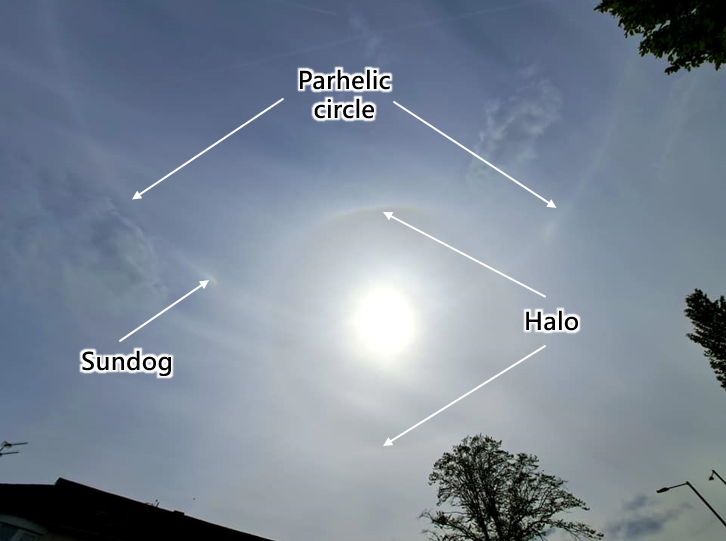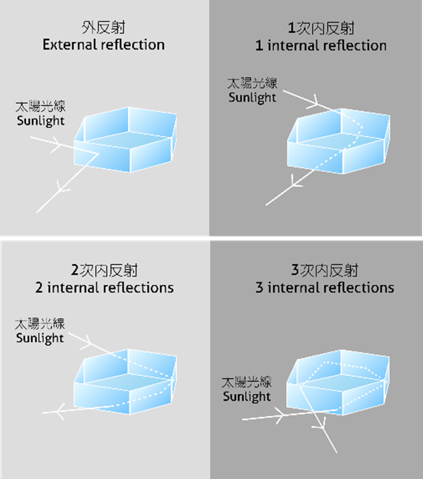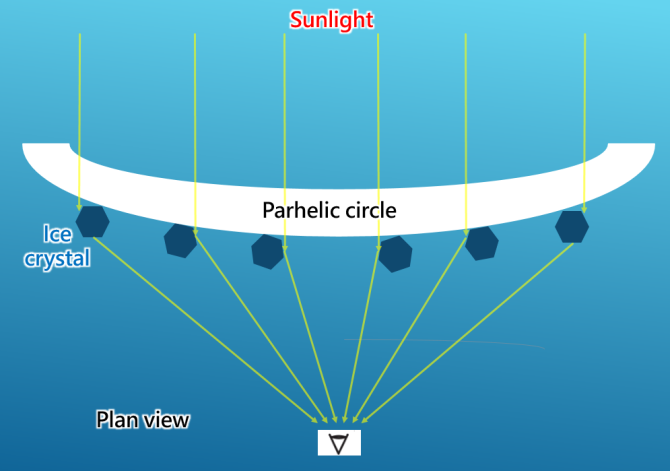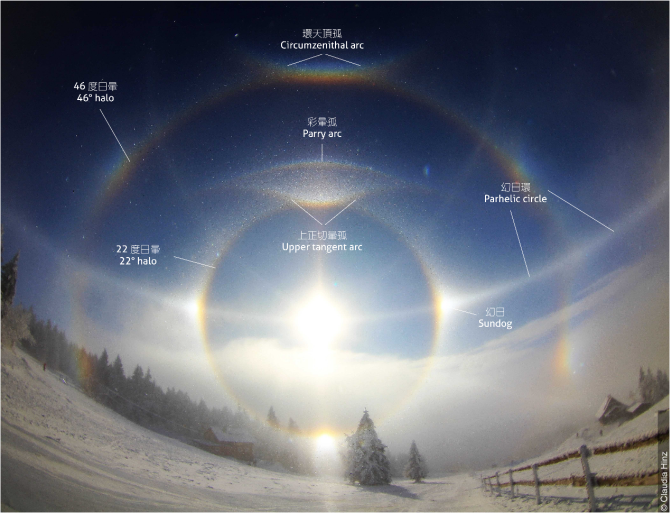Parhelic Circle
Parhelic Circle
Terence KUNG
July 2023
When sunlight or moonlight reflects or refracts from ice crystals in the atmosphere, an optical phenomenon collectively known as ‘halo’ is produced. The parhelic circle is one type of halo. It is a white ring of light circling the sky horizontally at sun’s elevated angle (altitude). Bright white spots may be observed at certain points of the parhelic circle. These bright spots occur most commonly outside the 22° halo. Sometimes they may appear at an azimuthal distance of 120° or even rarely opposite to the sun. These bright spots are called sundogs, and the parhelic circle looks like a ring of light passing through the sun and sundogs (Figure 1). A complete parhelic circle may surround the whole sky, but most of the time only certain sections of it can be observed. Parhelic circles are less commonly seen than sundogs and 22° halos.
When there are plenty of nearly vertical hexagonal ice crystals in the sky, the surfaces of the ice crystals will reflect the sunlight like mirrors (a paraselenic circle will be produced if moonlight is reflected). The reflection can be either external or single/multiple internal reflections (Figure 2). The entire parhelic circle is composed of light rays reflected by countless number of ice crystals (Figure 3). Since the parhelic circle is formed mainly due to the reflection of sunlight, it generally appears in white colour.
In fact, ‘halo’ comprises many types of interesting optical phenomena (Figure 4). Some other phenomena will be discussed in the future.

Figure 1 Parhelic circle, sundog and 22° halo occurring simultaneously. (Photo credit: MC Lam)

Figure 2 Sunlight hits the surfaces of hexagonal ice crystals, then emits from the side or bottom faces via external reflection or different times of internal reflections.

Figure 3 The parhelic circle is composed of sunlight reflected in different ways by countless number of hexagonal ice crystals in the sky. The section closer to (farther from) the sun is formed by external (internal) reflections of sunlight by ice crystals. (Note: The diagram is just for illustration. The size of objects in the diagram is not to scale.)

Figure 4 A photo taken in Czech Republic in the World Meteorological Organization's International Cloud Atlas shows the optical phenomena of parhelic circle, sundogs, 22° and 46° halo as well as circumzenithal arc, etc. at the same time. (Photo credit: Claudia Hinz)